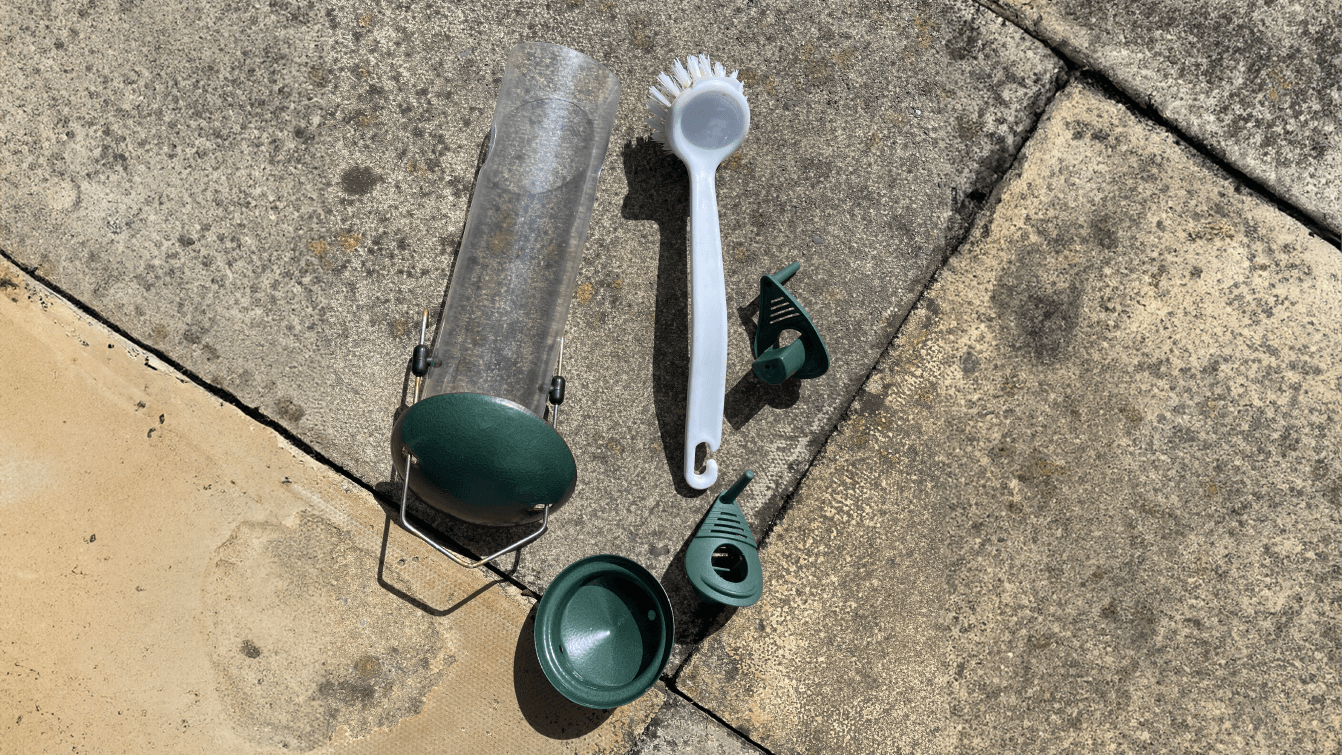20th June 2024
Our wonderful ‘Tails’ of UK Wildlife campaign is in full bloom, so it’s time to share some wildlife-based wisdom.
While it’s important that we each do our bit to support UK wildlife, it’s also essential to make sure what we’re doing actually helps them and doesn’t put them at risk.
Discover our top tips on wildlife etiquette, and explore the ways we can continue to save nature together…
Keep feeding stations clean
As you’ll know if you have pets, animals tend to leave a mess wherever they like to eat!
To keep the wildlife who visit your garden safe from harmful bacteria and viruses, you’ll need to:
- Remove any uneaten food before it becomes mouldy or inedible.
- Clean feeding stations at least once a month; though you’ll need to clean drinking water containers daily.
- After cleaning feeding stations thoroughly, let them dry before refilling.
Sweep and clean the areas around feeding stations regularly. - Use wildlife-safe cleaning products, e.g. boiling water or a pet-safe disinfectant that kills bird flu.
Always wear gloves while cleaning wildlife feeding stations, water containers, and bird baths; and don’t forget to wash your hands carefully afterwards.
Important: Only clean feeding stations outside – never bring bird feeders into your house to clean them, for example.

Best times of year to feed wildlife
Although there are certain times of year when wildlife needs a helping hand due to food shortages, e.g. summer and winter, they’ll appreciate food and water all year ‘round!
However, if you’re hoping to give an extra boost for wildlife when they need it most, here are some ideas:
- Wild birds – natural sources of food run low between October and April.
- Hedgehogs – energy is needed most during autumn and spring, before and after hibernation.
- Squirrels – due to droughts and warm weather, squirrels tend to struggle to find food and water during the summer months.
Things you shouldn’t feed to wildlife
A vital aspect of caring for wildlife is making sure what we’re feeding them is suitable and safe. You can visit our article about wildlife-friendly food to find out what to feed UK wildlife, though we’re going to share some food types you shouldn’t be offering to wildlife…
Remember: If you have a canine companion or feline friend, you’ll need to attract wildlife to your garden in pet-safe way.
What not to feed wild birds:
- Salty food, e.g. salted peanuts.
- Desiccated (dried) coconut.
- Dog biscuits.
- Cooked porridge.
- Large pieces of food, e.g. chunks of bread.
What not to feed hedgehogs:
- Dairy products, including milk and cheese (hedgehogs are lactose intolerant!).
- Bread.
- Mealworms.
- Peanuts.
- Salty food, e.g. bacon.
What not to feed squirrels:
- Fatty food, e.g. pizza.
- Sugary food, e.g. cake.
- Sweetened food, e.g. sugared almonds.
- Salty food, e.g. salted peanuts.
- Corn.
Important: Please don’t put chocolate, or products containing chocolate, out for wildlife because it can be harmful to many species (e.g. hedgehogs are lactose intolerant) and it’s toxic to pets.

Keep your dog close by
If you’re out and about on a walk, make sure you take notice of any signs and keep your dog on a lead if necessary. Loose dogs can scare or disturb wildlife and other animals so it’s important to keep them close.
Before letting them out into the garden, you could check to see if there’s any visitors to your food or water sources first. This is to stop your pooch from chasing any wildlife they might see as they pop outside.
Make your cat wildlife friendly
Cats are natural hunters, but if you wanted to help prevent the wildlife casualties your feline friend brings home you could:
- Pop a bell on their collar to warn wildlife they’re close by.
- Build a catio for safe outdoor access.
- Try training your cat to use a harness and lead.
- Make sure they are getting enough food, or have been fed before they go outside.
- Redirect their hunting instincts through play (using feather teasers etc.).
Even the tiniest action can have a big impact. Here are some of our articles all about the things you can do to take steps on your journey towards a wildlife-friendly future:
Animal welfare blog
If you found this blog useful, why not visit our animal welfare blog to find more articles about animal at risk around the world?
From news and facts, to charities helping protect animals and the great work they do - find out more about animal welfare and those making a difference.
Charities we support
Every year we donate hundreds of thousands of pounds to charities - find out more about the charities we support.
We know pets
Our pets are part of the family. To achieve our vision of a better future for pets everywhere, we work with our partners, vets, and other veterinary professionals who are pioneering the latest advancements in animal care. Our campaigns, articles, and events are crafted to support, educate, and celebrate pet owners, while our policies are designed to provide peace of mind at an affordable price.
Yet our policies don’t just protect against the unexpected – they have purpose, too.
Since we were founded over 25 years ago, we've provided industry-leading policies that protect the nation’s pets, while also making a difference to animal welfare and our planet. Thanks to you, our policyholders, we've donated over £9 million to more than 830 animal welfare charities and conservancies, helping to support vulnerable pets and wildlife around the world.
We’re proud to be wildly different. Are you?
